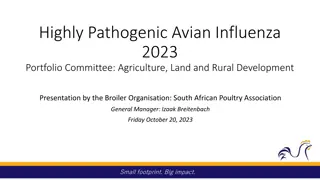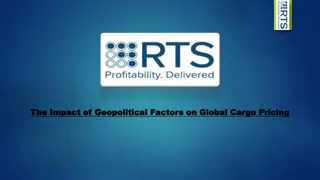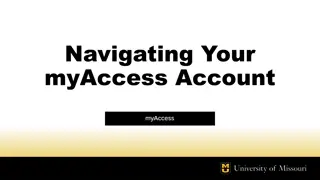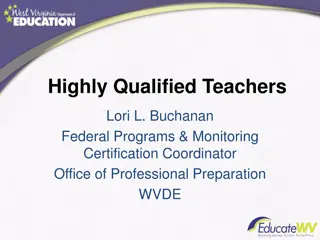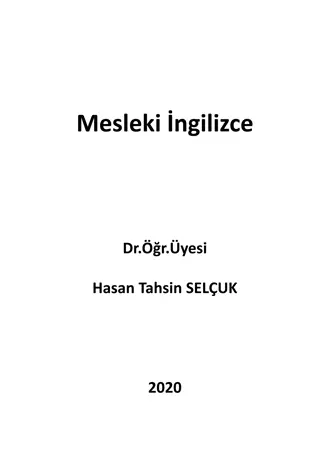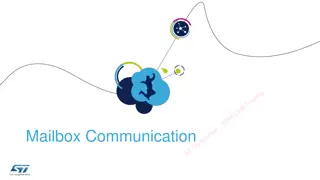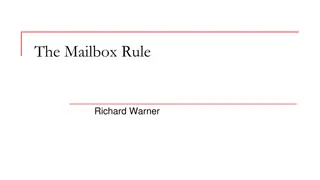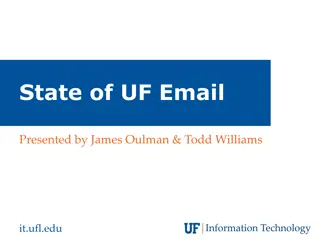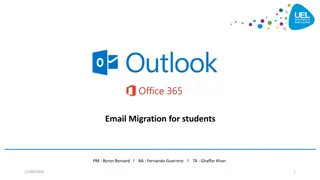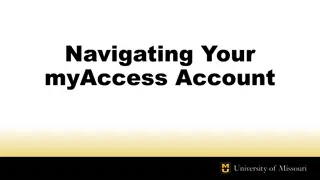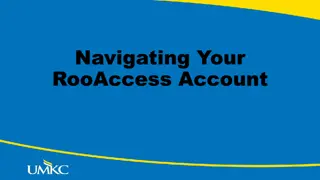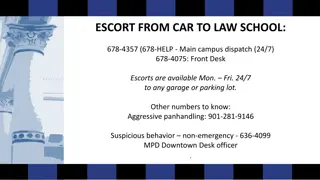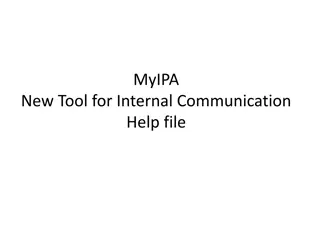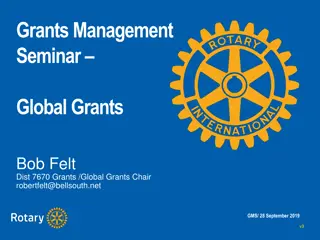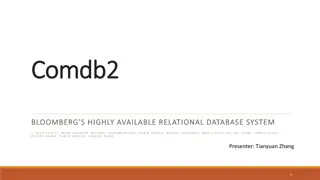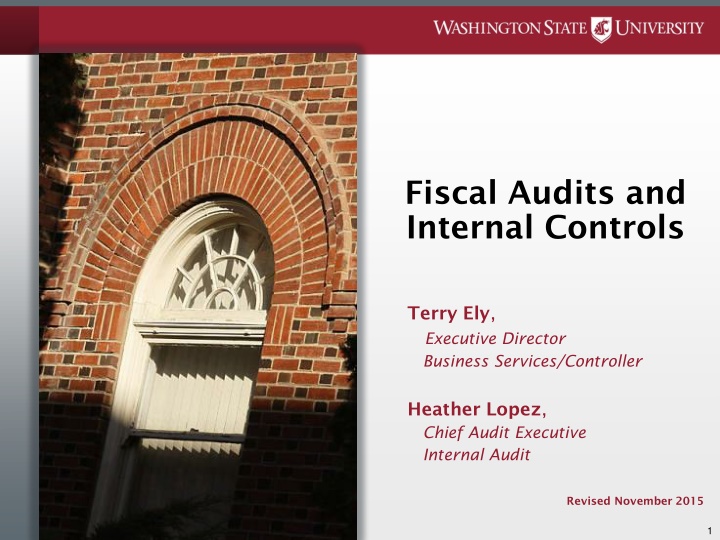
Global Highly Available B2Bi Mailbox
Architecture, challenges, and features of a high availability global mailbox solution. Learn about disaster recovery techniques, guiding principles, and the benefits of using purpose-built multi-data center mailbox architecture.
Download Presentation

Please find below an Image/Link to download the presentation.
The content on the website is provided AS IS for your information and personal use only. It may not be sold, licensed, or shared on other websites without obtaining consent from the author. If you encounter any issues during the download, it is possible that the publisher has removed the file from their server.
You are allowed to download the files provided on this website for personal or commercial use, subject to the condition that they are used lawfully. All files are the property of their respective owners.
The content on the website is provided AS IS for your information and personal use only. It may not be sold, licensed, or shared on other websites without obtaining consent from the author.
E N D
Presentation Transcript
Fiscal Audits and Internal Controls Terry Ely, Executive Director Business Services/Controller Heather Lopez, Chief Audit Executive Internal Audit Revised November 2015 1
Workshop Objectives Define internal control and risk Understand need for balancing risks and controls Discuss fraud and its indicators Discuss role of audit Identify key control activities to put in practice 2
Seven Critical Values Washington State University s mission statement includes seven values critical to achieving our goals: Quality and excellence Integrity, trust and respect Research, innovation and creativity Land-grant ideals Diversity and global citizenship Freedom of expression Stewardship and accountability 3
How do we uphold and honor the values of stewardship and accountability? through a strong system of internal controls University establishing and maintaining an adequate system of internal control of University assets. controls are necessary to ensure that University assets are not exposed to misappropriation or unauthorized access and use. management is responsible for Internal WSU BPPM 10.04 4
Definition: Internal Control Internal control means a process implemented [by a non-federal entity], designed to provide reasonable assurance regarding the achievement of objectives in the following categories: a) Effectiveness and efficiency of operations b) Reliability of reporting for internal and external use c) Compliance with applicable laws and regulations From Uniform Guidance (Section 200.61) 6
Federal Standards Per Uniform Guidance, non-federal entities must: Comply with federal statutes, regulations and the terms and conditions of the federal awards Evaluate and monitor compliance Take prompt action when non-compliance is identified Take reasonable measures to safeguard personally identifiable information and other information designated as sensitive 7
Why are they important? Good controls encourage efficiency and effectiveness of operations, promoting proper stewardship and accountability. Good controls ensure compliance with laws, regulations and University policies, and seek to eliminate waste, fraud and abuse. Good internal controls help an entity avoid damage to its reputation and other consequences. 8
Who is responsible for internal controls? Though leadership is ultimately responsible, everyone in an entity has some responsibility for the organization s internal controls. All personnel should be responsible to effect internal controls, communicate problems in operations, deviations from established standards, and violations of policy or law. Internal Controls are Everyone s Business! Auditors contribute to the effectiveness of controls, but they are not responsible for establishing or maintaining them. 9
Five Key Control Activities Control-conscious environment Segregation of duties Authorizations, approvals and verifications Control over assets Monitoring 10
Control-Conscious Environment Integrity and ethics Commitment to competence Leadership philosophy Organizational structure Tone from the top 11
Segregation of Duties Strong internal controls require adequate separation of duties: Record keeping Authorization Asset custody Reconciliation 12
Problems Caused by Inadequate Separation of Duties Administrative errors may not be detected since an independent review of transactions may not be occurring. Inappropriate or unauthorized transactions are permitted to occur since one individual controls a major portion of the revenue, expenditure, or payroll function. 13
What if there is inadequate staff to properly separate duties? Smaller units may not be able to develop the ideal system to adequately separate certain functions. In these cases, compensating controls can be used to decrease risk (e.g., increased monitoring from supervisor, chair, etc.) Share duties with a nearby department. Contact the Controller s Office or Internal Audit if you need assistance in determining your individual policies. 14
Authorization, Approvals and Verifications Authorization limits Rubber stamping Secure access to electronic signatures or other signatory devices Never, never, never sign a blank form Develop written procedures outlining delegation guidelines 15
Asset Control Activities Periodic asset counts Periodic comparisons Investigation of discrepancies Physical safeguards against theft and fire 16
Monitoring Means of detecting losses, errors or irregularities Review budget statements regularly Helps you understand the effectiveness of your internal controls 17
Control Examples Control: Designating who has authorization and approval authority for certain transaction types (e.g., must have contract authority to sign contracts on behalf of WSU). Control: Establishing separation of duties for asset control vs. reconciliation and monitoring (e.g., one employee receiving cash, another reconciling cash to receipts). Control: Implementing reconciliation process and oversight (e.g., requirement for monthly reconciliation of p-card activity on logs to bank statement and Balances for completeness). 18
Risk = The possibility that entity will not be able to: Internal controls are established to ensure entity will: Protect its assets Provide reliable financial data Comply with laws or policies Operate efficiently and effectively Protect its assets Provide reliable financial data Comply with laws or policies Operate efficiently and effectively 20
Balancing Risk and Controls Too few controls can result in: Loss of assets, donors, grants, contracts, state funding Poor business decisions Noncompliance with laws and regulations Increased regulations Public scandals 21
Balancing Risk and Controls (Continued) Too many controls can result in: Increased bureaucracy Increased complexity Increased cycle time Increase in non-value added activities Reduced productivity 22
Limitations of Internal Controls Judgment Decisions are made by humans, often under pressure and time constraints, based on information at hand. Breakdowns Employees may not understand instructions or may simply make mistakes. Errors may result from new systems and processes. Management Override High-level personnel may be able to override prescribed policies and procedures. Collusion Two or more individuals, working together, may be able to circumvent controls. Cost vs. Benefit The risk of failure and the potential effects of that failure must be weighed against the cost of establishing the controls. 23
Example One Department has service center with two cash drawers, busy lobby activity, 8 10 student workers in the drawers at any time over the course of an 8-hour day What are the risks? What would be good control activities? 24
Example Two Unit has one administrator, director and 80 staff and field employees. Because unit is in the field, all but four employees have individual purchasing cards to provide greater efficiency in purchasing and one card reconciler for all. What are the risks? What would be good control activities? 25
Different Levels of Risk Require Different Levels of Control Activities Examples: Take on project that requires international travel in Canada with students Take on project that requires international travel in Afghanistan with students Department starts to sell products made in research, teaching environment Department selling journals starts to sell a new line of journals 26
FRAUD 27
Definition of Fraud Occupational Fraud: The use of one s occupation for personal enrichment through the deliberate misuse or misapplication of the employing organization s resources or assets. 2014 Report to the Nation on Occupational Fraud and Abuse, ACFE a state employee may not use his or her position to secure special privileges or exemptions for himself or herself or other persons. (RCW 42.52.070) a state employee may not employ or use any person, money or property under the employee s official control or in his or her custody, for the private benefit or gain of the employee, or another. (RCW 42.52.160) 28
Three Primary Fraud Categories Asset Misappropriation: Steal or misuse organization s resources Corruption: Employee use of his/her influence in business transaction that violates duty to employer for personal benefit (or benefit of others) Financial Statement Fraud: Intentional misstatement or omission of material information in financial reports 29
Fraud Fast Facts 85% of fraud misappropriation Top 3 factors: Lack of adequate internal controls (32%), lack of management review (20%), control override (18.9%) Average duration of fraud from first occurrence to when discovered 6 months Tips by far most common detection method (42.4%)* Management review (16.9%) Internal audits (14.1%) 95% perpetrator s first time or no prior conviction Strong internal controls = deterrence *49.9% of tips by employees 30
Fraud Triangle Why People Commit Fraud Famed criminologist Donald R. Cressey Opportunity Motivation Rationalization Even the best systems of internal control cannot provide absolute safeguards against irregular activities. 31
Opportunity for Fraud Caused by circumventing internal controls or by internal control weaknesses. Nobody counts inventory or checks deviations from specifications, so losses are not known. Budgets are not reviewed for accuracy or appropriateness of expense. People are given authority, but their work is not reviewed. Too much trust and responsibility is placed in one employee improper separation of duties. The petty cash box is left unattended opportunity for loss. 32
Opportunity for Fraud (Examples Continued) Laptops and digital cameras are left out in the open in unlocked offices opportunity for loss. Culture of noncompliance: supervisors set bad example by taking supplies home, borrowing equipment for personal use, padding their travel expense reimbursements, not paying for personal long distance phone calls, not reporting leave. There is no internal audit function. The perception that fraud will be detected is probably the biggest deterrent to fraud. 33
Motive for Fraud Some kind of pressure or perceived pressure, typically economic, such as the need to pay for: College tuition Hospital bills Child support Gambling debts Drugs Illicit affairs An expensive lifestyle 34
Rationalization for Fraud Rationalization: Some excuse or validation for actions, such as: I am just borrowing the money and will pay it back. It is only temporary until I get over this financial difficulty. I need it more than they do, and they'll never miss it. Everybody else is doing it. No one will get hurt. It is for a good purpose. I deserve it because I ve been treated unfairly the organization owes me. 35
Red Flags for Fraud Top 7 Red Flags: Living beyond means, personal financial difficulties, control issues/unwilling to share duties, unusually close association with vendors or customers, divorce/family problems, wheeler-dealer attitude, irritability/ suspiciousness Activities that may be flags: - no vacation - unexplained variances - no reconciliation - one employee does it all rush requests - documentation not original - voluntary overtime - complaints 36
Internal Controls and Fraud Good controls are cost-effective. If you ve ever thought it s a good thing I m honest, you should consider strengthening controls around that procedure. Good internal controls protect you and your staff. 37
Fraud Prevention Create a culture of honesty and do not tolerate dishonest or unethical behavior in others. Create a positive work environment. Have a written code of ethics and make sure everyone is aware of it. Check employee references, conduct background checks. Train employees in fraud awareness. Provide employee assistance programs. Reduce opportunities for fraud by implementing good internal controls. 38
AUDITORS 39
Role of Auditors Auditors test to ensure management has an adequate internal control system to meet management objectives. Primary audit objectives usually include determining whether adequate internal controls are in place to ensure the unit is: In compliance with applicable laws and regulations Properly safeguarding resources Properly accounting, recording and reporting transaction activity 40
Effects of a Negative Audit Report Loss of future awards Bad publicity Potential undermining of public trust and confidence in agency and government Personal losses 41
Types of Auditors External auditors State auditors Federal auditors Compliance/program auditors Performance auditors Private audit firms (e.g., KPMG, PWC) Internal auditors 42
What triggers an audit? Statutory requirement Single audit Financial compliance audit Contract contingency Complaint Internal / external Whistleblower Management request Part of control environment 43
Common Control Concerns that Result in Audit Findings Inadequate separation of duties Inadequate monitoring Inadequate authorization Lack of control over environment / security Lack of security Inadequate knowledge of procedures 44
CONTROL ACTIVITIES FOR SPECIFIC FUNCTIONS 45
Payroll Management should provide for adequate separation of duties: Appointing personnel Scheduling of hours separate from posting of hours worked Supervisory oversight and approval of hours/time worked Payroll processing 46
More on Payroll Time records are pay-affecting documents Should never be pre-approved or pre-signed Should be signed/certified by employee and supervisor Should reflect actual hours worked After certification, approved time records should not return to employee 47
Purchasing Cards Understand and comply with University policy. Safeguard purchasing cards when not in use. Only card custodian should use card; if exception, complete Temporary Delegation form and log the users and checkout dates/times. Log all transactions and review online timely. 48
Purchasing Cards (Continued) Reconcile logs to bank statements and Balances timely, investigate discrepancies. Ensure adequate separation of duties custodian, authorizing official. Retain original receipts. Review purchase activity to ensure for allowable purchases. 49
Purchasing Card Audits When requested for audit, have available or allow access to: Purchasing card logs Monthly bank statements Receipts Delegation forms and user logs, if applicable Purchasing cards site verify 50

